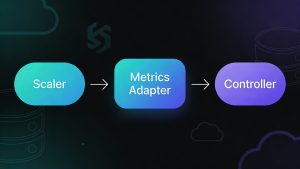In the ever-evolving world of software development, becoming a proficient .NET backend developer requires a comprehensive understanding of various technologies and concepts. This roadmap provides a structured approach to mastering the skills necessary for success in this field.
Developer Fundamentals
To build a solid foundation, aspiring .NET backend developers should start by grasping the following fundamental concepts:
- Internet functionality
- HTTP/HTTPS protocols
- API concepts
- HTTP status codes
- Object-Oriented Programming (OOP)
- Basic data structures and algorithms
- Efficient problem-solving techniques
- Proficiency in online research
- Familiarity with ChatGPT prompts
- In-depth knowledge of Git
- Practical experience with GitHub
Diving into .NET
After establishing a strong base, developers should focus on the .NET ecosystem:
- Understanding the .NET framework
- Learning C# syntax and language features (C# 12 with .NET 8)
- Building simple console applications
- Mastering .NET CLI commands
- Becoming proficient in IDEs like Visual Studio or Visual Studio Code
- Grasping NuGet package management
- Concentrating on .NET 6 or later versions, preferably .NET 8
Advanced C# Concepts
As developers progress, they should delve into more advanced C# topics:
- Clean code practices
- C# project templates
- Decoupled code writing using .NET CLI
- Interfaces, Dependency Injection, and Dependency Inversion
- SOLID principles
- Design patterns
- Code reviews and open-source contributions
- Simplicity in coding (KISS principle)
- Studying open-source C# projects
- Unit testing
Database Essentials
A crucial aspect of backend development is understanding databases:
- Database design concepts
- SQL syntax
- Stored procedures
- Relational vs. NoSQL databases
- Database optimization techniques
- Experience with various database systems (PostgreSQL, MSSQL, MongoDB, AWS DynamoDB, Azure CosmosDB)
ASP.NET Core Mastery
ASP.NET Core is the powerhouse for building robust web applications and APIs:
- Creating and understanding ASP.NET Core Web APIs
- Controllers and Minimal APIs
- Middleware concepts
- Routing mechanisms
- Filters and attributes
- API architectures (REST, GraphQL, gRPC)
- MVC pattern
- Configuration management and service lifecycles
- Authentication and authorization
- Extension methods
- Exception handling
Object-Relational Mapping (ORM)
ORMs bridge the gap between object-oriented programming and relational databases:
- Entity Framework Core
- Code-First and Database-First approaches
- Migrations and EF CLI commands
- LINQ proficiency
- Data loading strategies
- DbContext, Query Filters, and Schemas
- EF Core Interceptors
- Dapper for raw SQL execution
- NoSQL database integration
Authentication and Authorization
Securing applications is paramount in modern development:
- Authentication and authorization principles
- Implementing custom auth systems
- ASP.NET Core Identity
- Identity endpoints in .NET 8
- User, role, and permission management
- Cookie-based authentication
- JSON Web Tokens (JWT)
- Identity Server implementation
- OpenID Authentication
- OAuth 2.0 protocols and flows
- Third-party OAuth providers
- Claims and permissions management
- Multi-tenancy solutions
System and Solution Design
As developers advance, they should focus on broader system design concepts:
- Building maintainable and readable applications
- Breaking down complex systems
- Monolithic vs. Microservices architectures
- Event-Driven Architecture
- Clean Architecture principles
- Vertical Slice Architecture
- Domain-Driven Design concepts
Microservices Architecture
For building scalable and decoupled systems, understanding microservices is essential:
- Microservices use cases and trade-offs
- Inter-service communication (RabbitMQ, Kafka)
- Event sourcing and eventual consistency
- Observability in microservices
- Containerization and orchestration
- Secrets management
- API Gateways (YARP, Ocelot)
- Load balancing techniques
Testing Strategies
Ensuring code quality through comprehensive testing is crucial:
- Unit testing methodologies
- Integration testing approaches
- xUnit and NUnit frameworks
- Fluent Assertions for improved readability
- Bogus for generating test data
- K6 for load testing
- Test-Driven Development (TDD)
Caching Techniques
Improving application performance through effective caching:
- Caching concepts and strategies
- Cache invalidation techniques
- Cache expiration policies
- In-memory and in-process caching
- Distributed caching with Redis
- Application-level caching
Logging and Observability
Enhancing application monitoring and debugging:
- Microsoft’s ILogger interface
- Serilog implementation
- Logging sinks
- Structured logging practices
- Serilog SEQ for development
- Correlation IDs in logging
- NLog as an alternative
- ELK stack for log management
Background Task Management
Handling asynchronous operations efficiently:
- IHostedService and BackgroundService
- CRON job concepts
- Hangfire implementation
- Quartz for job scheduling
Essential Libraries and Tools
Familiarity with various .NET libraries can significantly enhance productivity:
- Refit for HTTP calls
- FluentValidation for request validation
- ProblemDetails for error handling
- Polly for retry mechanisms
- SignalR for real-time communication
- API versioning techniques
- Scrutor for dependency injection
- Carter for Minimal API routing
- Object mapping tools (AutoMapper, Mapster, Mapperly)
- Code analysis with Sonar
- OpenIddict for authentication
- YARP for reverse proxy
- CQRS pattern with MediatR
- API documentation with Swagger
- Performance benchmarking with Benchmark.NET
Containerization and Orchestration
Essential skills for modern deployment strategies:
- Docker fundamentals and benefits
- Docker Compose usage
- .NET’s built-in containerization features
- Multi-stage Docker builds
- Docker Hub and CLI commands
- Docker networking concepts
- Kubernetes basics and kubectl commands
Observability and Monitoring
Tracking system health and performance:
- ELK Stack implementation
- Prometheus for metrics collection
- Grafana for data visualization
- OpenTelemetry in .NET
- Cloud-based logging and monitoring solutions
Cloud Technologies
Cloud proficiency is crucial in today’s development landscape:
- AWS services (Lambda, S3, EC2, ECS, Kinesis, IAM, SQS, SNS, DynamoDB)
- Serverless architecture principles
- Cloud certifications
- Designing cloud-based systems
- Infrastructure as Code (IaC) tools (Terraform, AWS CDK, Pulumi)
- CI/CD implementation (GitHub Actions, AWS CodePipeline, Azure Pipelines)
- Scripting for automation (Python)
Soft Skills Development
Enhancing professional growth beyond technical skills:
- Effective communication
- Documentation proficiency
- Task prioritization and management
- Building an online presence
- Learning from industry leaders
- Creating a portfolio and blog
- Resume building
- Adaptability to new technologies
- Analytical thinking
- Leadership skills
- Staying updated with industry trends
Remember, continuous learning and practical application of these concepts are key to becoming a successful .NET backend developer. Build projects, contribute to open-source, and stay curious to excel in this dynamic field.
Read more such articles from our Newsletter here.



